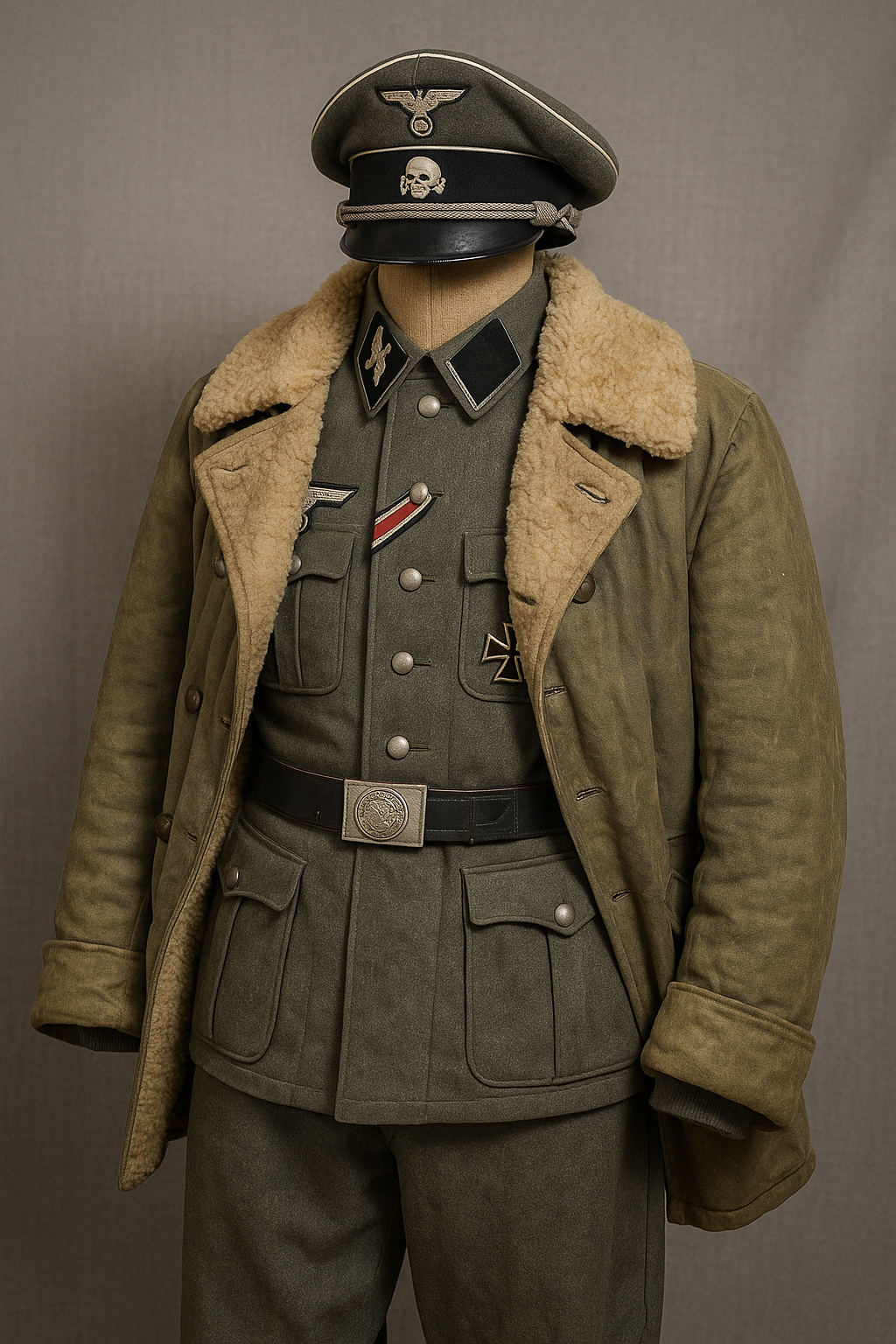
SS Officer Uniform: A Collector’s Guide to Vintage WWII Uniforms
Published on Sep 30, 2025
Introduction: Why WWII Uniforms Still Capture Global Attention
Did you know the market for WWII militaria exceeds $1 billion annually? That’s how strong the passion for collecting vintage uniforms and gear has become. Among the most sought-after items is the SS officer uniform, prized for its historical significance and rarity.
Whether you’re a history buff, a reenactor, or a new collector, understanding the value and care of these uniforms can make all the difference. This guide breaks down how to identify authentic pieces, avoid common pitfalls, and keep up with trends—so you can confidently grow your collection of WWII uniforms.
The Significance of the SS Officer Uniform
The SS officer uniform represents one of the most iconic and controversial pieces of WWII history. It symbolises both the power of Nazi Germany’s military machine and the importance of authenticity in historical preservation.
Collectors seek these uniforms because:
- They are scarce due to limited wartime production.
- Their craftsmanship (tailoring, insignia, materials) was distinct.
- They offer insight into the German military structure during WWII.
But before diving into purchases, it’s essential to understand how to separate authentic uniforms from reproductions.
How to Identify Authentic Vintage WWII Uniforms
Key Markers of Genuine SS Officer Uniforms
- Stitching & Fabric – Authentic SS uniforms used wool or gabardine, not synthetic blends.
- Markings & Stamps – Look for wartime manufacturer codes or depot stamps.
- Insignia – Originals were hand-embroidered with silver thread, not machine-stitched reproductions.
- Wear & Ageing – True pieces show natural ageing, not uniform "tea-staining".
Avoiding Common Pitfalls
- Fake Insignia Swap: Sellers may attach reproduction insignia to real WWII tunics.
- Overpriced Reproductions: Some reproductions are passed off as originals at inflated prices.
- Missing Provenance: Always ask for sourcing history—where and how the uniform was obtained.
👉 Pro Tip: Use a blacklight test. Authentic WWII fabric typically does not fluoresce, while modern threads often glow.
Expanding Your Collection Beyond the SS Officer Uniform
While SS officer uniforms attract attention, exploring other categories helps diversify a collection and deepen historical understanding.
German WWII Winter Uniforms
The German WWII winter uniform is a fascinating collectible due to the Eastern Front’s harsh conditions. Collectors value fur-lined parkas, reversible camouflage smocks, and insulated boots.
Action Step: Look for items with field repairs—they tell a soldier’s story and enhance authenticity.
WWI German Outfits
Predecessors of WWII designs, the WW1 German outfit often featured spiked Pickelhaube helmets and simpler wool tunics. These pieces are more affordable than WWII uniforms and make excellent starter collectibles.
WWII German Panzer Uniforms
The WWII German panzer uniform, known for its black colour and skull insignia, is a centrepiece for armour enthusiasts. Tank crew uniforms are especially rare in good condition due to heavy field use.
WWII German Afrika Korps Uniforms
The WW2 German Afrika Korps uniforms stand out with their tan and tropical adaptations. Collectors appreciate their uniqueness compared to European theatre uniforms.
Action Step: Pay attention to fabric—Afrika Korps items often used lighter cotton blends, unlike European wool garments.
Preserving Your Vintage WWII Uniforms
Once you own a vintage SS officer uniform or any WWII uniform, proper care is crucial:
- Storage: Keep in a dark, dry environment. Use acid-free boxes or padded hangers.
- Cleaning: Never dry clean. Consult a textile conservator for safe methods.
- Handling: Always wear cotton gloves to prevent oils from damaging fabrics.
- Display: If showcasing, use UV-protected glass to avoid fading.
Common Pitfall: Storing in plastic bins traps moisture, leading to mildew and fabric decay.
Current Trends in Collecting WWII Uniforms
The market for militaria is evolving. Here are the trends collectors are following:
- Shift Toward Documentation: Uniforms with soldier ID, photos, or service papers are fetching higher prices.
- Digital Authentication: Collectors are using high-resolution scans and AI tools to verify insignia stitching patterns.
- Growing Interest in Non-European Uniforms: While the SS officer uniform dominates, Afrika Korps and Soviet uniforms are rising in popularity.
- Reenactment & Film Demand: WWII reenactments and productions have increased demand for both original and high-quality reproductions.
Where to Buy Vintage WWII Uniforms Safely
- Specialised Auction Houses: Like Hermann Historica or Rock Island Auction Company.
- Reputable Online Marketplaces: Always check seller reviews and item authentication.
- Collector Forums: Engage with experienced collectors for advice and deals.
- Local Military Shows: Great for hands-on inspection before purchase.
Pro Tip: Join militaria collector associations—they often give early access to rare sales and better pricing.
Conclusion: Why the SS Officer Uniform Still Matters
The SS officer uniform is more than just clothing—it’s a window into WWII history. For collectors, it represents craftsmanship, scarcity, and a responsibility to preserve the past.
By learning how to authenticate, expanding into related uniforms like the German WWII winter uniform, WWI German outfit, WWII German panzer uniform, and WW2 German Afrika Korps uniforms, and following preservation best practices, you can build a meaningful collection.
